Creating high-quality content is only half the battle. Many website owners struggle to see their pages rank on Google, even when their content is informative, well-structured, and targeted to the right audience.
Meanwhile, competitors with similar or even lower-quality content often outrank them. The missing piece in this puzzle is often link equity, the value or authority passed from one page to another through hyperlinks.
Link equity acts like a vote of confidence. When a high-authority page links to your page, search engines see it as a signal of trust and relevance.
The flow of link equity can make or break your SEO strategy. Without it, even your best content may remain hidden from search results, while pages with strong link support climb to the top.
Understanding how link equity works is essential for directing authority to the right pages, improving search visibility, and driving meaningful traffic that can lead to conversions.
Quick Summary: Link Equity
This is the TLDR. Skim this for the short version, then dive deeper if you need.
- Most SaaS & B2B sites have strong content but struggle to rank missing factor: link equity.
- Link equity = authority passed through backlinks & internal links.
- It helps Google identify trusted, high-value pages.
- 79.7% of SEO pros say link building is essential for ranking.
- Pages with 40–44 internal links get 4× more traffic.
- Internal linking + authoritative backlinks = stronger rankings.
- Content clusters help direct equity to priority pages.
- Builds sustainable SEO growth, not just traffic spikes.
What is link equity?
Link equity, often called “link juice,” is the value or authority that one webpage passes to another through hyperlinks.
This value isn’t the same for every link; it depends on factors like the authority of the linking page, the relevance of its content to the page it links to, and the overall credibility of the website.
Both internal links (within your own website) and external backlinks (from other sites) can pass link equity.
According to recent data, nearly 79.7% of SEO professionals consider link building a crucial part of their overall strategy.
The more high-quality, relevant pages link to a particular page, the stronger its PageRank becomes.
In SaaS SEO, marketers often combine internal linking with white-label link building to ensure that authority flows consistently and sustainably across key pages.
In short, Link equity determines how much “ranking power” each link passes to another page, the foundation of sustainable SEO growth.
Expert Insight:
According to research, Google Search Advocate, “Internal linking is one of the most critical SEO strategies. It helps Google understand what’s important on your site.
Many SaaS marketers combine internal linking with white label link building practices to ensure the authority their site earns is both sustainable and scalable.
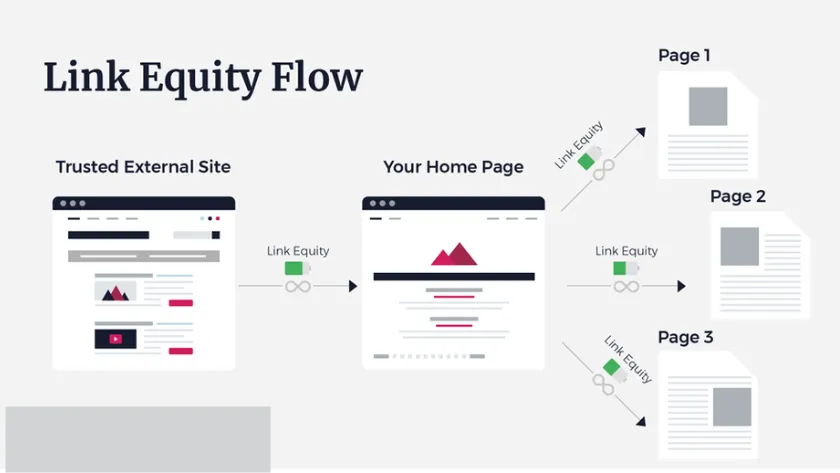
Internal vs. external links
Both internal and external links play a role in passing link equity:
Internal links: These help distribute link equity throughout your own site. They ensure that your most important pages receive authority from other pages, improving their chances of ranking higher.
Zyppy’s SEO study analyzing 23 million internal links found that URLs with 40–44 internal links received about 4 times more Google traffic than those with 0–4 internal links.
However, excessive internal links may begin to reduce traffic due to link dilution and navigation overload.
External links: Links from other reputable and relevant websites can significantly boost a page’s authority and visibility in search engines.
High-quality external backlinks are often a key factor in improving search rankings, which is why many businesses rely on a curated media database to find outreach opportunities that can deliver strong, authoritative links.
Turn link equity into rankings: action table
| Concept | Quick Insight | Key Action |
| Link Equity | Value passed via hyperlinks | Focus on high-authority links |
| Internal Links | Distributes equity on your site | Use strategically to boost key pages |
| External Links | Adds authority from other sites | Acquire high-quality backlinks |
| Factors Affecting Equity | Authority, Relevance, Link Count, Position, Tag | Prioritize quality & relevance |
| Strategy | Internal links + content clusters | Direct equity to high-value pages |
Why is link equity important?
Link equity plays a critical role in determining how well a webpage performs in search results.
It reflects the authority, credibility, and value that a page gains through backlinks from other pages.
The higher the link equity a page receives, the stronger its chance of ranking higher on Google and other search engines.
Understanding link equity is essential for anyone looking to improve website visibility and drive more organic traffic.
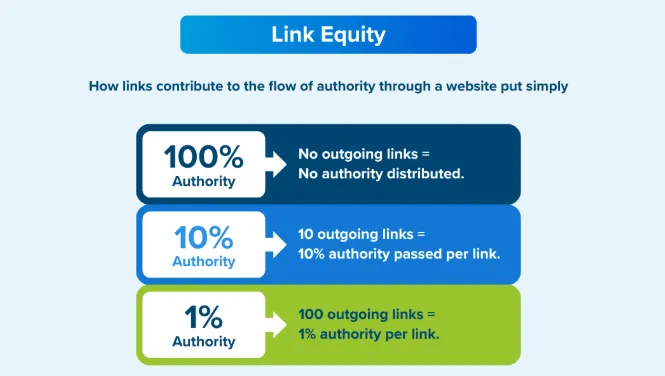
Key reasons link equity matters
1. Influences page rank
Link equity directly affects PageRank, which measures a page’s importance based on the links it receives. Pages with higher link equity are considered more authoritative and are more likely to appear at the top of search results.
2. Signals backlink quality
Not all backlinks are equal. Link equity helps you understand which links carry more weight. Links from high-authority, relevant websites pass more value than links from low-quality or unrelated sites.
3. Guides link-building strategy
By knowing how link equity works, you can focus your efforts on earning backlinks that truly matter. This means prioritizing quality over quantity and targeting sites that are credible and relevant to your niche.
4. Boosts overall site authority
Internal linking can also help distribute link equity within your own site. Pages that receive more link equity from both internal and external links benefit from higher authority and better search visibility.
5. Supports long-term SEO growth
Focusing on link equity ensures sustainable SEO performance. High-quality backlinks continue to pass authority over time, improving rankings and helping your site maintain its search presence.
In short: Building and managing link equity ensures your website grows stronger over time not just spikes temporarily in rankings.
If you’re ready to build lasting authority, our link building services can help you secure trusted backlinks, strengthen your site’s credibility, and keep your rankings growing.
Key takeaways
1. Link equity is crucial for SEO success and search engine visibility.
2. Focus on acquiring links from authoritative and relevant sites.
3. Direct equity to pages with high business value and ranking potential.
4. Use internal linking and content clusters to maximize the distribution of link equity.
5. Regularly monitor your backlinks to maintain a healthy flow of authority across your website.
Actionable "6-Step Link Equity Play" (copyable checklist)
Grab the instant checklist to improve your backlinks and get better SEO results.

What determines link equity?
The amount of link equity a page passes to another depends on several factors.
By understanding these, you can focus on strategies that truly enhance your page authority.
1. The linking page’s authority
The authority of the page linking to your site is the most important factor in determining link equity.
High-authority pages carry significantly more weight. For example, a link from a well-established website like BBC.com or The New York Times passes far more value than a link from a small, new blog.
This is why creating a strong linkable asset, such as in-depth guides, reports, or tools, is essential. Valuable resources naturally attract high-quality backlinks that pass more equity.
Understanding page authority vs. domain authority
Page authority (PA): Measures the strength and ranking potential of a single page based on its backlinks. Ahrefs calls this URL Rating (UR).
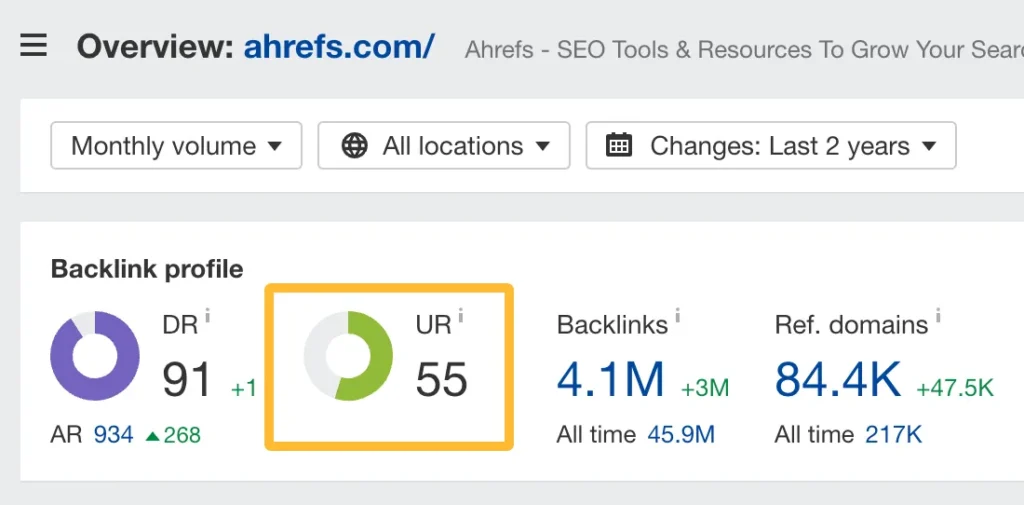
Domain Rating (DR): Measures the overall strength of a website’s backlink profile, reflecting the quality and quantity of all referring domains.
When building links, always prioritize pages with high page authority, not just domain authority, as this directly affects the equity passed to your target page.
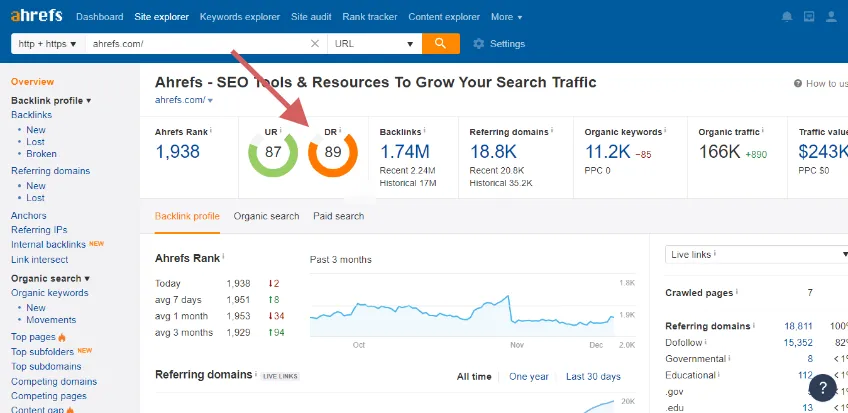
Example: If BBC links to a news article on your site, the authority of that specific page influences your ranking more than the general domain authority of BBC.com.
2. Link relevancy
Relevance is a crucial factor in determining the value of a link. Google assesses whether the linking page’s content is topically aligned with your page.
Topical alignment: Links from pages with content similar to your own are more valuable.
For instance, if your page covers “organic gardening,” a link from a gardening blog or sustainable living site will pass more equity than a link from a tech review site.
Strategic outreach: When acquiring backlinks, always prioritize websites and pages that share similar topics.
This ensures that your link equity is recognized as relevant and meaningful by search engines.
Tip: Relevance not only improves link equity but also brings more qualified traffic, as users clicking through are likely interested in your content.
3. The number of links on the page
The total number of outbound links on a page affects how much value each individual link passes.
Equity dilution: If a page links to hundreds of other sites, each link passes less authority. Conversely, a page with just a few outbound links passes more equity per link.
Strategic targeting: Pages with a manageable number of outbound links are ideal sources for backlinks, as your page receives a larger share of authority.
Example: A curated resource page linking to 500 sites will pass only a tiny fraction of its authority to your page. A blog post linking to three related pages will pass far more.
4. Link position
Where a link appears on a page can influence the equity it passes.
Editorial links: Links embedded naturally in the main content are considered the most valuable.
Sidebars, headers, and footers: Links in these areas are typically weighted less by search engines, as they are not part of the primary content flow.
Tip: When pursuing backlinks, request placement within the body of content whenever possible, as this ensures maximum link equity.
5. The link tag
Links may carry special tags, such as “nofollow,” “sponsored,” or “UGC” (user-generated content).
Nofollow/sponsored links: Google ignores these links when calculating link equity. Even if they come from authoritative sites, they do not pass value to your page.
Checking tags: Most SEO tools indicate whether a link is nofollow or dofollow. If checking manually, right-click the link → Inspect → look for rel=”nofollow” or rel=”sponsored”.
Actionable advice: Focus your efforts on acquiring links without restrictive tags to maximize the authority passed to your pages.
In short: Prioritize dofollow editorial links for real authority transfer.
Internal links spread link equity around your website
Building backlinks to specific pages can be challenging. Often, the pages that naturally attract the most links are not the ones that generate the most business value:
Research pages: These pages often receive many backlinks but may not convert visitors into customers.
Product or service pages: These pages are valuable but usually attract fewer natural backlinks.
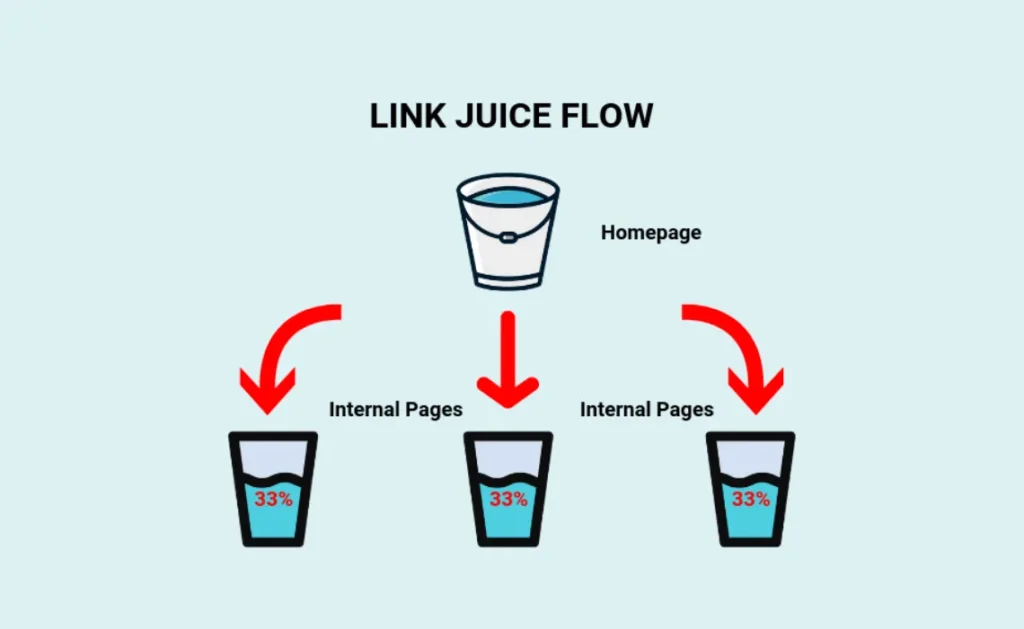
Solution: Use internal linking to pass equity from highly linked pages to pages you want to rank. This ensures your most important pages gain authority and visibility.
Choosing which pages should receive link equity
When deciding where to direct internal links, consider:
1. Ranking potential
Pages that rank in the lower half of page one or page two for target keywords have high potential.
Internal linking can push these pages higher in search results.
Always assess competition: if top-ranking pages are from extremely authoritative sites, consider targeting another keyword.
Tip: Combine internal linking with content updates to increase ranking potential further.
2. Business value
Pages that generate sales, leads, or conversions should be prioritized.
Use analytics to identify which pages convert best, whether product pages, service pages, or high-value blog posts.
The goal is to balance ranking potential and business value when distributing link equity internally.
Actionable "6-Step Link Equity Play" (copyable checklist)
Grab the instant checklist to improve your backlinks and get better SEO results.

Internal linking strategies for effective link equity sharing
Internal linking is one of the most powerful ways to distribute link equity within your website.
By strategically linking your pages, you can ensure that your most important pages receive authority, improve their search rankings, and provide a better user experience.
Below, we break down the key strategies for effective internal linking.
1. Identify pages with high link equity
The first step in internal linking is to identify the pages on your website that already hold the most authority. These are the pages capable of passing substantial link equity to other pages.
Use SEO tools: Tools like Ahrefs will help you identify pages with the most backlinks, the highest page authority, or URL ratings.
These metrics indicate which pages already have credibility and are trusted by search engines.
Analyze traffic patterns: High-traffic pages often attract more natural backlinks and are good candidates for distributing link equity.
This process is particularly valuable in b2b link building, where authority is often consolidated in a small number of key content pieces like case studies, whitepapers, or industry research reports.
Studies by Ahrefs show that in a majority of websites, a small percentage of pages accumulate the majority of backlinks.
For instance, 96.55% of all pages in the Ahrefs index get no organic traffic, heavily correlating with those pages lacking inbound links, while a small group (top 2-6%) earn outsized link equity.
Monitor your backlink profile regularly: Link equity is not static. Pages that were previously authoritative may lose value if backlinks are removed or new links are added elsewhere.
Regularly monitoring your backlink profile ensures you always know which pages can effectively pass authority.
Tip: Focus on pages that are already performing well in search or receiving natural backlinks, as these pages will provide the most value when linking internally.
2. Add internal links strategically
Once you’ve identified high-authority pages, the next step is to direct their equity to pages that you want to rank higher.
However, this must be done thoughtfully to maximize impact.
Link from high-authority pages: Internal links should ideally come from pages with high link equity. These pages act as hubs, passing credibility to other important pages on your site.
Ensure relevance: Links should be contextually appropriate. Search engines value links that make sense within the content.
Expert Tip:
Minuttia’s research shows that structured content clusters can drive 100+ daily organic clicks by strategically interlinking pillar and cluster content.
Adding a link to an unrelated page can reduce the effectiveness of your link equity distribution.
Add additional content if necessary: If your high-authority page doesn’t naturally connect to the target page, consider adding a relevant paragraph or a section where the link fits naturally.
This ensures the link feels editorial and provides value to readers.
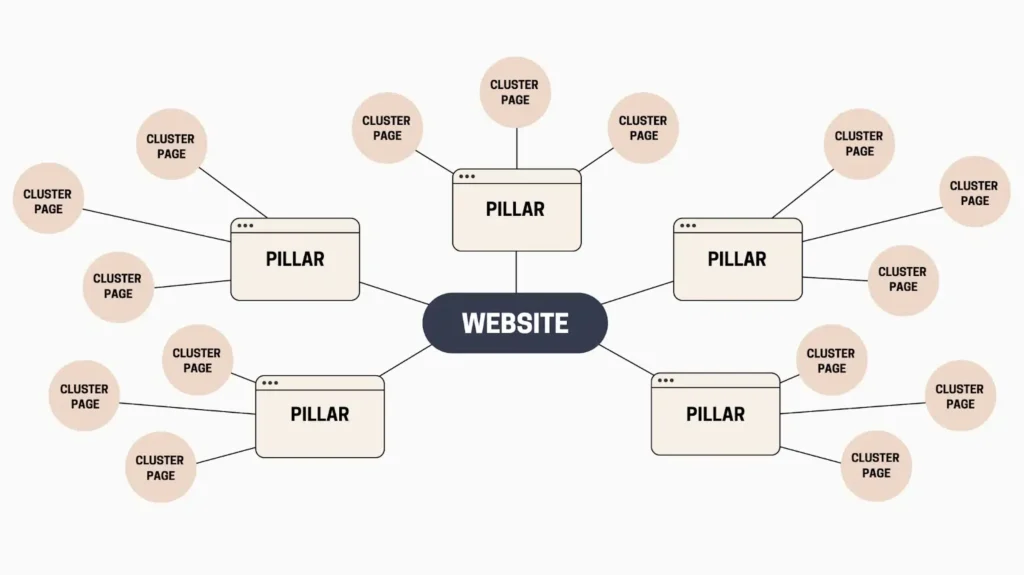
Pro tip: Avoid overloading pages with too many links. Focus on quality and relevance to maintain user experience and avoid diluting the link equity.
3. Create content clusters
Content clusters are a strategic way to organize your site and distribute link equity effectively.
A content cluster is a group of related pages that revolve around a central theme or topic.
Case studies by Minuttia reveal that a single content cluster can drive thousands of keyword rankings and generate over 100 organic clicks daily by leveraging careful internal linking between pillar and cluster pages.
Develop multiple pages around a single topic: Cover different aspects of a topic through separate pages or blog posts.
For example, if your pillar page is about “Digital Marketing,” cluster pages could cover SEO, PPC, content marketing, and social media marketing.
Interlink the cluster pages: Link the supporting cluster pages back to the pillar page and vice versa.
This network of links reinforces the pillar page’s authority and helps search engines understand the structure and relevance of your content.
Include a pillar page: The pillar page serves as the central authority page that you want to rank highly.
By connecting all cluster pages to it, you concentrate link equity toward your main page while still passing some equity across the supporting content.
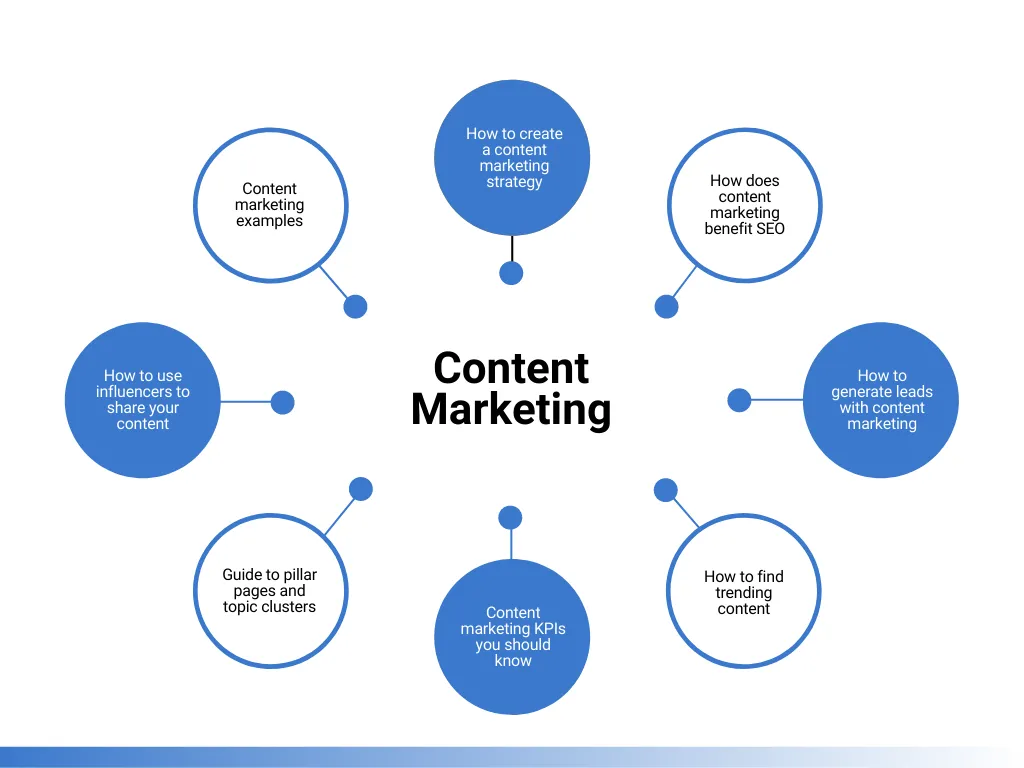
Benefit: This strategy not only distributes link equity efficiently but also improves site navigation, user experience, and topical relevance for search engines.
Actionable "6-Step Link Equity Play" (copyable checklist)
Grab the instant checklist to improve your backlinks and get better SEO results.

Conclusion
Link equity is more than just a technical SEO term. It is the foundation of how authority, credibility, and value flow across the web and within your own site.
This not only boosts search engine rankings but also improves user experience, guiding visitors to the most valuable pages on your site.
The most effective SEO strategies don’t rely on content or keywords; they rely on how authority flows through your site and the wider web.
By consistently building, distributing, and preserving link equity, you create a strong foundation for long-term SEO success.
If you’re ready to strengthen this part of your strategy and secure high-quality backlinks that truly make a difference, our link-building team is here to help.
Contact us today to discuss how we can improve your site’s authority, visibility, and rankings.
FAQ’s about Link Equity Techniques
-
Do all backlinks pass the same amount of link equity?
No. Factors like the linking site’s authority, topical relevance, the number of outbound links, and the position of the link all influence how much equity is passed.
-
How do content clusters boost link equity?
Content clusters connect multiple related articles to a central pillar page. This structure directs equity towards the pillar page, making it the authority hub that search engines favor for rankings.
-
Why is monitoring backlinks important for link equity?
Backlinks change over time. A removed or downgraded backlink can reduce equity flow. Regular monitoring ensures you keep authority flowing and spot gaps early.
-
Can link equity support long-term SEO growth?
Yes. In contrast to paid ads, high-quality backlinks continue to pass authority over time. When managed well, link equity builds a durable SEO foundation that supports steady growth.
-
What role does relevance play in passing link equity?
Relevance is key. A backlink from a website in your niche passes more meaningful equity than a random, unrelated link, as search engines value topical alignment.
-
How can businesses decide which pages should receive link equity?
Focus on two factors: ranking potential (pages close to page one) and business value (pages that bring leads or sales). Balancing these ensures your SEO supports growth goals.




